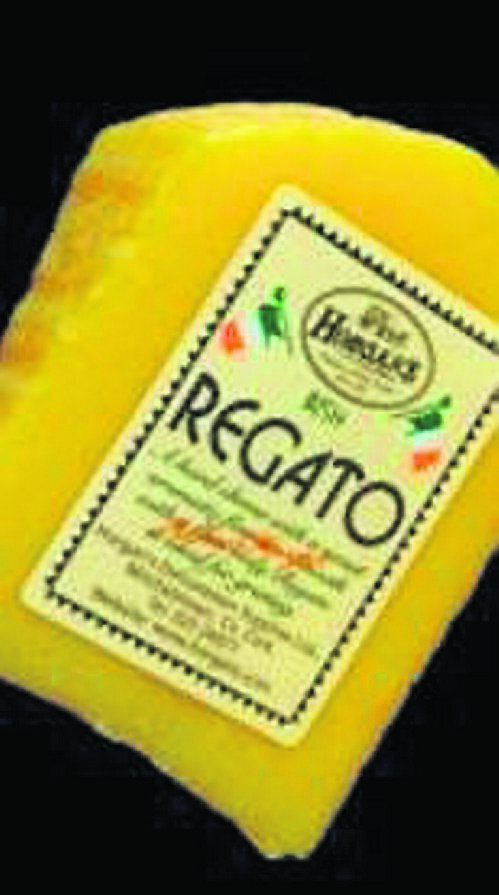Badge of honour that gives Irish foods the mark of distinction

Waterford Blaa is among ten Irish food products that have been given Protected Geographic Indication (PGI) under an EU scheme
IN recent weeks, Irish Grass-Fed Beef and Achill Island Sea Salt became the latest additions to Ireland’s collection of food and drink products bestowed with a special EU-approved status
.Ireland now has ten registered food products and three spirits (designations shared with the UK to encompass Northern Ireland) that have been granted Protected Geographic Indication (PGO) or Protected Designation of Origin status (PDO).
This mark of distinction has been granted to: Clare Island Salmon (PGI), Imokilly Regato (PDO), Timoleague Brown Pudding (PGI), Connemara Hill Lamb (PGI), Waterford Blaa (PGI), Oriel Sea Salt (PDO), Oriel Sea Minerals (PDO), Sneem Black Pudding (PGI), Irish Grass-Fed Beef (PGI), Achill Island Sea Salt (PDO), Irish Cream Liqueurs (PDO), Irish Poitín (PGI), and Irish Whiskey (PGI).
Ireland lags its European counterparts regarding the quantity of Geographic Indicators (GIs), but there’s a concerted effort in play to gain more.
As a food-producing nation with a high volume of exports and a rich food heritage, it does seem odd that Ireland doesn’t rival France, Italy, Spain and Greece for the variety and scale of food and drink products carrying these distinctions.
At UCCs Food Industry Training Unit (FITU), an additional module has been added to their Postgraduate Diploma in Speciality and Artisan Food Enterprises, to explore GIs and maybe sow the seed of ambition amongst the small food businesses, led by leading expert in GIs, Muiris Kennedy.
Muiris was Bord Bia’s Director of Marketing for 12 years and subsequently set up his own consultancy working with food producer groups.
He has lectured with UCC for more than a decade with a focus on food exporting, and more recently for the programme in Speciality and Artisan Food Enterprise.
He also works as a consultant and evaluator for the European Commission, evaluating proposals looking for a slice of the Commission’s €180 million budget for promoting European agri-food programmes.
In other words, Muiris knows what he’s talking about, and is well positioned to understand the value in Ireland participating more actively in the GI scheme.
So, what is a Geographic Indictor?
“The Commission set up the GI scheme in the 1990s to give consumers confidence about the authenticity and origins of specific food products from around Europe,” said Muiris.
“GIs give consumers the confidence that what they’re buying is original, how it’s made and the geographic region it comes from.
“The three schemes in operation are PDO (Protected Designation of Origin) and it indicates that all various processes [to make a product] takes place in one specific geographic region.
Imokilly Regato, made in East Cork [by Dairygold], has held a PDO for 30 years, but it’s targeted at the Greek market specifically. Other big names in PDOs are Parma ham, balsamic vinegars, and Parmigiano-Reggiano.”

“PGI (Protected Geographic Indication) is the most popular of the schemes where producers have one element of the process taking place in a specific geographic region.”
“The third is TSG (Traditional Speciality Guarantee). This is not about origin, it’s about recipe. In terms of prestige and marketing, PDO and PGI far outweighs a TSG.”
As consumers, why should we care whether a product carries a GI mark?
“For consumers, it authenticates a product,” said Muiris. “A stamp of approval by the European Commission. There’s transparency about how it’s produced, who is producing it, where it comes from, and the skillset required to produce it.”
“Origin-linked products are more important than ever. Big brands don’t have to think about that because they have big budgets to easily promote their products or features of their products. The real distinction for GI products is that link to the origin.
“A lot are based in the rural economy, and most governments are trying to promote and develop rural economies. These speciality type food products are one way of doing that.”
Muiris explains the focus of GIs is on producer groups, clusters of small producers in specific regions or geographical areas working together to promote the uniqueness of their food and drink offering.
“The concept of producer groups is better established in Mediterranean countries than in northern European countries, and Ireland doesn’t have a great tradition of producer groups working together,” said Muiris, with the obvious exception of co-operative societies. “It gives a level playing field to allow smaller producers to have Intellectual Property to avoid counterfeiting of products,” Muiris explained.
In general, awareness of GIs in Ireland would be low, and this is a key challenge.
“It’s not particularly high in Europe either, with only 20% of consumers aware what GIs are. Consumer understanding is one of the big challenges.
“Promoting the concept of GIs is left to individual Member States; in Ireland that’s the Department of Agriculture Food and Marine. There’s a team of specialists that help producers with their applications, promote and police GIs.”
It’s possible that the recent high-profile announcement of a PGI for Irish Grass-Fed Beef will help to raise the profile of GIs in Ireland considerably.
Ireland exports 90% of the beef it produces, and in a competitive marketplace, the PGI presents a significant point of difference.
“It’s an endorsement from the European Commission that says Irish Grass-Fed Beef is different,” said Muiris.
“In exporting marketing, getting any point of difference is very hard to do. It’s become increasingly difficult in the context of the EU; the funding Ireland gets from Brussels means we’re not allowed to promote Irish beef per se, we must promote European beef.
“The only exception to this rule about origin promotion is for GI products, that’s one of the advantages from an Irish Grass-Fed Beef perspective.”
The PGI for Irish Grass-Fed Beef comes with strict criteria and specifications, including the requirement for beef cattle to be fresh pasture grazed for a minimum 90% of the year.
In addition, all beef producers who wish to use the PGI mark must be a member of the producer group named in the PGI. In the case of Irish Grass-Fed Beef, that’s Bord Bia.
“You have to convince the Commission by producing evidence, sometimes backed up by scientific research, that what is being claimed stacks up; that the taste is different, the configuration of Irish Grass-Fed Beef is different from other beef products in the category.”
GIs give food and drink products a distinct advantage on the international marketplace by offering a distinct, proven and prestigious point of difference.
Back in Ireland, the marks offer everyday consumers a way to know that a product can be trusted and that its claims to authenticity are real.
Other examples of European products protected under the GI scheme are Halloumi (Cyprus) and Feta (Greece). Such is the standing of these marks that Irish producers of cheese in the same style had to change the name.
“That’s why if a cheese that looks and tastes very like Feta is made somewhere other than Greece, it cannot be called Feta, and why Greek-Style Salad Cheese has appeared on cheese counters.
The process itself of gaining a GI can be time- consuming and expensive, and there is no guarantee an application will be successful,” said Muiris. “The Waterford Blaa (a soft floury bap that can be traced back to the Huguenots arriving in Waterford in the 17th century) took just over three years, but others, like Irish Grass-Fed Beef, took much longer with multiple iterations of the specification criteria before being accepted.
There is limited financial support for producer groups. Some funding from Leader groups and Local Enterprise Offices may be available, and DAFM is on hand for all the soft supports of advice and guidance.

“Even if an application is finally successful, while there may be an expectation on behalf of the producers to command a greater price for their recognised premium product, it’s no guarantee.
“It’s more important to be able to say we have this designation but our competitors don’t, therefore we have something unique. In general, GI products are categorised as being premium priced, but that’s not guaranteed.”
Muiris added: “It is expensive, and becoming more and more so as the bar is getting higher, and the Commission is increasingly looking for substantial evidence backed up by scientific analysis to support the application.
“But if you were to look up financial support for food producer groups, you wouldn’t see it. Bord Bia provide support to individual companies under their marketing brand scheme, but it cannot support group activity.
“Individual producers looking to set up a food producer group would need to individually apply for a grant from Bord Bia.”
“The importance of what food producer groups do isn’t recognised at policy level. We don’t have that history the same as in Italy, France, Spain and Greece.”
With so many obstacles (expense, time, no quantifiable guarantee for return on investment), why has UCC identified GIs as an important issue for small food producers in Ireland?
“The benefits far outweigh the challenges. In terms of opportunities, it’s hard to quantify the exact extent and nature of benefits to producer groups, but these designations do give this point of difference.”
“The Waterford Blaa has four bakers in the producer group. When they got their PGI, they had a media launch with national headlines generating approximately €500,000 in coverage. It’s now also been identified as part of the food tourism offering in the town, so the benefits extend beyond the food producer out into the wider community.”
If there was one sector of Irish-produced foods that Muiris would love to see receive a GI, what would that be?
“It must be farmhouse cheese! There are 150 farmhouse cheese brands in Ireland, and they are the most innovative, committed producers. They’re all individual so it would require a bit of focus, but there’s huge amounts of potential there.
“That would certainly be in my wish list.”







 App?
App?





